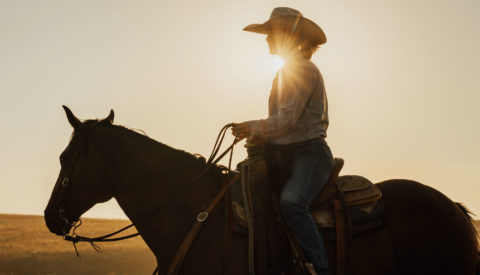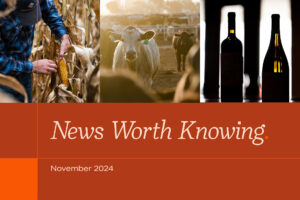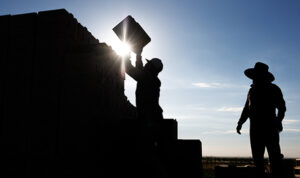By Don Close, Executive Head Emeritus There are no signs of beef cow herd expansion on the horizon. The quarterly breakdown of steers and heifers on feed within the USDA’s October Cattle on Feed report showed that the percentage of heifers in the mix was unchanged from a year before at 39.66%. That is marginally higher than the last update in July. Although the percentage of heifers on feed was close to expectations, market participants viewed it as disappointing because there had been some anecdotal claims and conversations of heifers being retained for the breeding herd. A Mix of Unfavorable Factors The prospects for buyer demand for beef replacement heifers have become even more complicated. First, the rapid erosion of pasture and range conditions since midsummer has dampened producer confidence in having pastures with the capacity to carry the additional head count. At the end of October, the Pasture and Range Conditions report showed 53% of U.S. areas were rated in poor to very poor condition, compared with 37% at the end of October 2023. Winter wheat grazing prospects have also been deplorable because of the dry late-fall conditions that have delayed planting. As of the end of October, emergence of winter wheat was only 56%. Better moisture conditions during the spring and early summer allowed for aggressive hay baling. While increased hay supplies are encouraging, they are not a replacement for having adequate grazing opportunities. Interest costs and interest rate risk continue to be a factor, too, in the slow-to-nonexistent herd rebuilding. Despite the Federal Reserve’s 50-basis point interest rate cut in September, followed by a 25-basis point cut in November, signals don’t indicate a fast fall in rates. Long-term bond prices suggest that the bond market thinks the Fed overreacted with the initial 50-basis point cut. So, Where Do We Go From Here? Through the fall, calf prices have improved from a summer slump, making a solid recovery trading at $3.50 per hundredweight (cwt). At the end of October, the CME Feeder Cattle Index was solidly trading at $2.50/cwt. In both 2022 and 2023, heifers made up just under 40% of cattle on feed at year’s end. From what we have seen for heifer retention year to date, especially in October, we are not expecting any meaningful decline in the heifer percentage at the end of the year. With no visible signs of retention in 2024, it puts pressure on how this year’s heifer calves will be managed and traded. For the fall shipping season so far, it appears there could be a slight effort toward heifer retention. Heifers could fall under a two-way category where they aren’t yet in a full heifer development program but instead on hold while producers gain insight into weather prospects, interest rates and prices. If weather conditions don’t improve soon, the heifers will likely be sold later as feeder cattle. If the percentage of heifers on feed doesn’t decline sharply to below 36% during the first half of 2025, it will be increasingly safe to assume that rebuilding will be kicked down the road another year. In our view, the market outlook is solid given beef demand, and herd expansion will occur. It is just a matter of pasture and range conditions improving and calf prices reaching a certain level to trigger expansion.
More Articles
See All InsightsThe Giles story begins with the family’s 1872 arrival in Kansas, and really took off in 1947 when Norman A. and Norman Lee Giles purchased the original ranch in Clark County.
Terrain analysts dissect news topics important to agriculture and weigh their significance for the sectors relevant to our Farm Credit customers. In this issue, our analysts
Key points: Representing more than 20% of U.S. agricultural exports, California stands to benefit from efforts to narrow the trade gap. The rising cost of regulations



